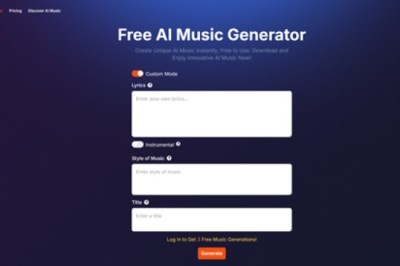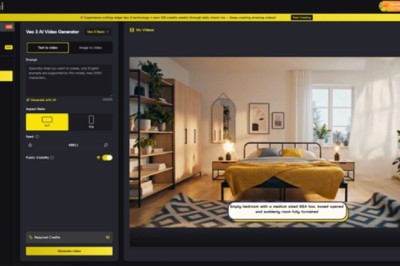views
Today's market is becoming more competitive than ever before. Anyone can quickly create a website and start selling products or services in this digital era. However, having the best product or service and a visually appealing website wouldn't secure your ticket to success. Of course, it requires a lot of effort and resources, but your top priority should be to let your target market know that your business exists.
Why Optimize?
There are many ways to optimize your business and website. But why do business owners need to invest time and money into this process? The answers are simple: to increase brand awareness, improve conversions, and later, save money.
Higher brand awareness can leverage your chance of better conversion rates. In other words, you're more likely to get people to your website and make them take action, such as buying your product or signing up for your email list. Finally, you'll need to spend less on advertising and marketing since you get more people on your website, thus saving money in the long run.
Ways to Optimize Your Business and Website
1. Improve website design and user experience
Studies have shown that people are more likely to trust and buy from websites that look professional and well-designed. So, your website must be appealing and easy to use and navigate for your target audience. Aside from this, you must also ensure that your website is responsive to all screen sizes and devices since more people are now using smartphones and tablets to search the internet.
Another way to improve your website's user experience is by ensuring all your pages load quickly. No one wants to wait for a slow website, so make your site as fast as possible. You can use tools like Google's PageSpeed Insights to test your website speed and get tips on improving it.
2. Create Compelling Content
Website content is another critical factor that can help you rank higher in search engine results pages (SERPs) and improve your conversion rates. Keyword-rich contents are essential in optimization. For example, employee leave is a keyword with high monthly searches that you can use for your leave management software website. You can mention this keyword in your content, such as blog posts, headlines, meta descriptions, and even videos. But don't stuff them everywhere, as it will make your content sound unnatural and could get you penalized by Google.
You can use tools like Google AdWords Keyword Planner to list keywords related to your business and their monthly search volume. However, keep in mind that your goal is to produce exciting and informative content so people will want to read or watch your website and not to stuff keywords all over your content to get a higher rank in SERPs.
3. Use Social Media
Social media is a powerful marketing tool that can help build an online presence for businesses and websites. If you plan to use social media, put keywords and hashtags to make your content easy to find. You can also add social media buttons, and blog RSS feeds to your website so people can share or subscribe to your content whenever you publish a new post.
Remember to post interesting and engaging content regularly. Try mixing up your content, such as sharing blog posts, images, infographics, videos, and contests to connect and build relationships with your potential customers.
4. Employ SEO Agency or Consultant
Search Engine Optimization (SEO) is optimizing a website to rank higher in search engines (like Google, Bing, and Yahoo) to improve its online visibility and reach more potential customers. If you lack the necessary knowledge for this, hiring an SEO agency or consultant might be a good idea. They can build high-quality backlinks from other websites and create keyword-rich content targeting your ideal customer.
Employing an SEO company may cost significantly, but the long-term benefits can be worth it. So, make sure to do your research and read reviews. It would be best if you also asked for case studies or sample works to see firsthand how they've helped other businesses succeed.
5. Add a call-to-action (CTA) statement
Besides posting engaging content, your website must have concise and relevant CTA or call-to-action statements. This statement will urge your audience to take a specific action. For example, if you're posting a blog post about tips for improving website traffic, your CTA could be "Learn More Tips for Improving Website Traffic." Or, if you're sharing an infographic about the benefits of social media marketing, your CTA could be "Download Our Social Media Marketing eBook." This will make people quickly understand what you want them to do.
6. Analyze Your Results
Finally, analyzing your results after implementing optimization tips is essential. This will help you see what's working and what's not. You can use Google Analytics to track your website traffic and see how people find your site. Or, you can use tools like Google Search Console to see how your pages rank in search engine results.
If you don't see any improvements, it's time to analyze what went wrong. Maybe you didn't use the right keywords or post enough content. Perhaps your social media posts weren't engaging enough. Whatever the case may be, make adjustments and try again.
Conclusion:
Optimizing your business and website takes time and effort, but it's worth it if you want to grow your business. Remember, there is no one-size-fits-all solution, so take the time to experiment with different techniques and see what works best for your business. With a bit of patience and perseverance, you'll be on your way to driving more traffic to your site and increasing sales.





















Comments
0 comment